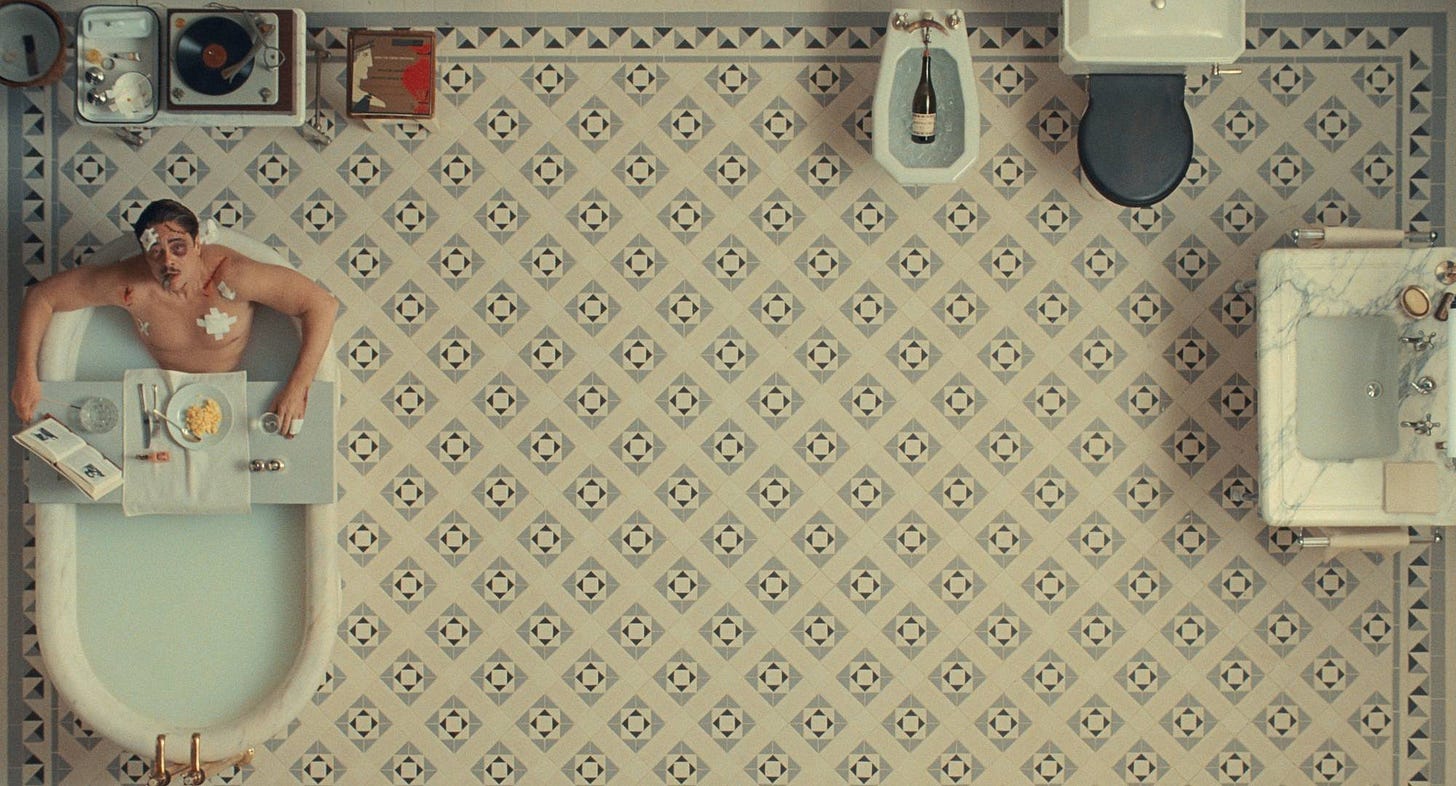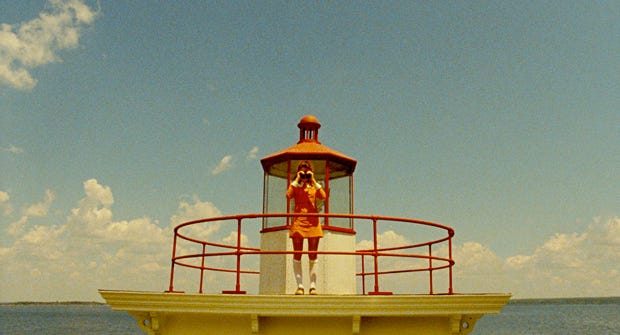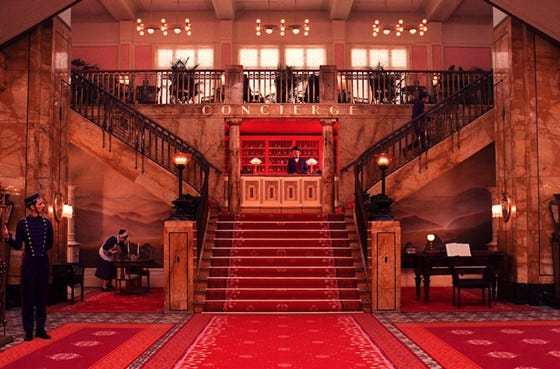I am a woman who loves symmetry. I love uniform patterns and repetition, and take great pleasure in reoccurring aesthetics or visual themes within cinema. I particularly enjoy directors whose vision or style is easily recognised throughout their work; Guillermo del Toro, Fincher and Mr. Postmodern himself - Wes Anderson.
Having recently watched his latest, The Phoenician Scheme, I am reminded just how visually pleasing Anderson’s work is and the very specific soothing effect they have on me, my mood and my sense of creativity.
Throughout Anderson’s work the colour pallets, the artistry, the symmetry, the mini-model-esque sets, and the intricate mise-en-scene all scratch an itch inside my brain that feels much like a mercifully cool shower on a particularly warm day.
It is with great regret I find myself with limited ability to be as precise and controlled as Anderson, both within my work and person. I am messy, often ungraceful and clumsy, and despite finding great comfort in order and structure, often succumb to my own calamity.
Even my writing process has a lumbering quality to it. I write whatever comes to me, when it comes to me, in haphazard paragraphs; hastily typing with clumsy fingers or scrawling recklessly into notebooks.
With all this in mind, it is a relief to let myself enjoy Wes Anderson's own brand of perfectly put-together anarchy, letting such aesthetically pleasing cinema soothe my busy mind.
When it comes to a Wes Anderson film, details of the narrative itself almost do not matter because the visual splendour of his work is so pleasing that I feel thoroughly satisfied with the visuals alone.
It's lucky, however, that I find myself charmed by the majority of Anderson's cinematic catalogue. Particular favourites include The Grand Budapest Hotel (2014), Moonrise Kingdom (2012), Isle of Dogs (2018) and who doesn’t love Fantastic Mr. Fox (2009).
I love Moonrise Kingdom for it’s quirky and fun binocular shots, which merge character with audience member in an immersive and joyful way. Shots like these also play with space and distance, mirroring the way Moonrise Kingdom’s two star-crossed lovers are kept apart throughout various moments in the narrative.
The colour palate within Moonrise Kingdom is also just a total delight. That dreamy pop of orange against the blue sky and that hazy summer-yellow (featured heavily throughout the film) helps to create Anderson-typical colour blocking, enabling Suzie to almost look as if she’s about to walk through the frame towards us, centering that beautiful, symmetrical shot.
The Grand Budapest Hotel is another example of Wes Anderson’s outstanding eye. Working with production designers Adam Stockhausen and Anna Pinnock, Anderson delivers a film with opulence and grandeur in abundance.
The hotel, both exterior and interior, is just stunning and each shot begs to be explored. There is so much to view that one experiences the film with a greedy sense of voyeurism, eyes gorging on the mise-en-scene and always finding some new and beautiful detail to enjoy.
I could explore and wax-lyrical about Wes Anderson’s style of filmmaking for days but I fear there are few of you so patient as to read much more. While it is not essential for future partners to enjoy Wes Anderson films, it is essential that they let me talk their ear-off about them - a girl’s got to have standards.









